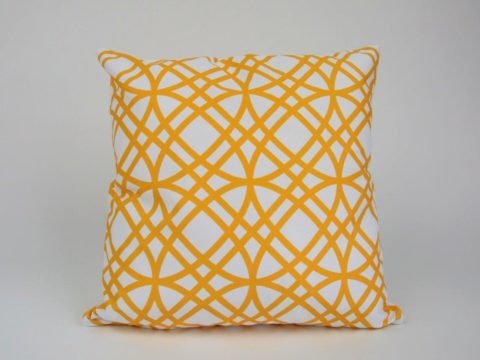Buckden Towers
Remnants of a red-brick Tudor episcopal palace
Chapter 2 : History
Buckden (or Bugden) has been the location of one of the palaces of the bishops of Lincoln since at least the Norman Conquest. St Hugh of Lincoln, Bishop from 1186 to 1203, lived there, as did the majority of his successors until 1853.
The earliest palaces would have been of wood, but a stone building was probably erected in the early 13th century, including a Great Hall, a Chapel and Great Chamber. These were located on what is now the eastern side of the complex. There was some fire-damage in 1291, although the extent of it is not clear.
The chapel ran east-west with its entrance between the Great Hall and the Great Chamber, in a similar position to the modern chapel, but further east.
Extensive rebuilding took place in the third quarter of the 15th century, first by Bishop Thomas Rotherham (Bp. 1472 – 1480), later Archbishop of York, and Lord Chancellor to both Edward IV and Henry VII, and then by Bishop John Russell (Bp. 1480 – 1494).
Rotherham was responsible for the restoration of the Great Hall, and for the majority of the Great Tower. This contained some twelve rooms, including one called the ‘King’s Chamber’ and was probably used as Rotherham’s own living quarters. There are four turrets, two of which originally contained a staircase, although only one remains, in the north-east turret. This enabled access from the Great Chamber, as the north-east turret abutted the south-west corner of the Great Hall.
Bishop Russell completed the Great Tower and also built the western range with the Inner Gatehouse, which bears his coat of arms, cunningly created in the brickwork – azure, two chevrons or between three roses argent.
Russell was succeeded as Bishop of Lincoln by William Smyth and then by Cardinal Thomas Wolsey who barely had time to visit before being promoted to the Archbishopric of York. Wolsey was replaced by Thomas Atwater, who held the see until 1521, but made little impression on politics. His successor was Bishop John Longland.
Longland played an interesting part in Henry and Katharine’s annulment case. He was Henry VIII’s Confessor, and it was apparently to him, in 1526, that Henry first confessed his doubts as to the validity of his marriage to Katharine. Presumably, Longland either agreed with Henry that the marriage was of dubious legality, or he immediately decided that the whole matter was above his pay-grade and referred the King to Wolsey.
It was during Longland’s tenure that Katharine was housed at Buckden, arriving some time in the summer of 1533. According to Chapuys, the local populace turned out to wish her well, and promise their support. Katharine however, did not like Buckden – the moat, and its position on the edge of the Fens (not drained then, as they are now), made it damp and cold. She petitioned to move, but was horrified when the Duke of Suffolk, her former brother-in-law, came to move her to Somersham – wetter, colder, more isolated and disease ridden.
She adamantly refused to leave Buckden, locking herself in her chamber (probably in the north-east turret of the Great Tower) and saying she would have to be taken by force. With insufficient men, or orders to take such a drastic step, especially in the face of the menacing crowd of villagers who appeared, Suffolk retreated. An alternative was suggested, which Katharine acquiesced in, and in 1534 she left Buckden for nearby Kimbolton.
Buckden was the location of the deaths of Henry Brandon, 2nd Duke of Suffolk, and Charles Brandon, 3rd Duke of Suffolk. These brothers, sons of the aforementioned Duke of Suffolk whom Katharine knew, were by his third wife, Katherine Willoughby. They died on the same day of ‘sweating-sickness’ on 16th July 1551.
The Bishops of Lincoln continued to use Buckden. Extensive repairs were undertaken under Bishop John Williams (1621 – 1642). Large swathes of the buildings were removed during the Commonwealth, but partially rebuilt after the Restoration by Bishop Robert Sanderson (1660 – 1663).
In 1837, Buckden was transferred from the See of Lincoln to that of Ely and lost its status as an archiepiscopal palace. The remainder of the mediaeval buildings were demolished in 1871, when the moat was also filled in. During the Great War, the Victorian house was used as a convalescent hospital, following which it came into the possession of a historian, Dr Robert Holmes Edlestone, who undertook some excavation. Dr Edlestone bequeathed the property to his sister, who in turn gave it to the Roman Catholic Diocese of Northampton which granted Buckden to the Claretion Mission in 1956.
Other buildings of interest in the village are the Lion pub, dating from 1492, and possibly once the guesthouse for the Bishop’s Palace, and St Mary’s Church.
St Mary’s is a mixture of 13 – 15th century build and looks much as it would have done in Katharine’s day. The tower is from the later 15th century, as is the south facing entrance, although some of the south wall is earlier. The chancel roof is late 15th century, but the delightful bosses are later in date.
Sources & Bibliography
'Buckden', in An Inventory of the Historical Monuments in Huntingdonshire (London, 1926), pp. 31-41. British History Online http://www.british-history.ac.uk/rchme/hunts/pp31-... [accessed 7 May 2016]
Friends of Buckden Towers website www.fobt.org.uk
Morris, Sarah, and Natalie Grueninger, In the Footsteps of the Six Wives of Henry VIII: The Visitor’s Companion to the Palaces, Castles & Houses Associated with Henry VIII's Iconic Queens (United Kingdom: Amberley Publishing, 2016)














